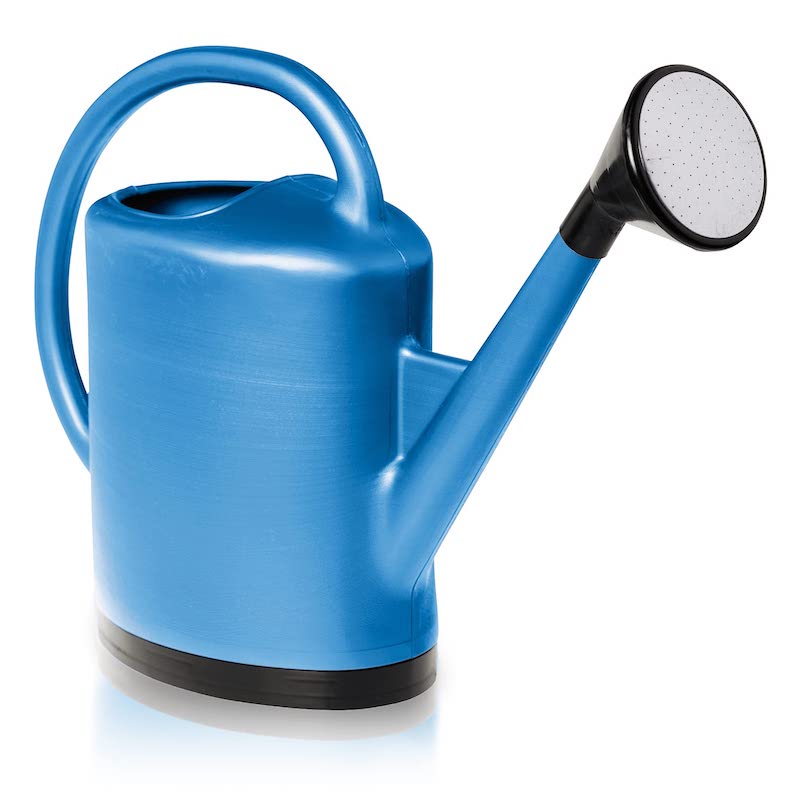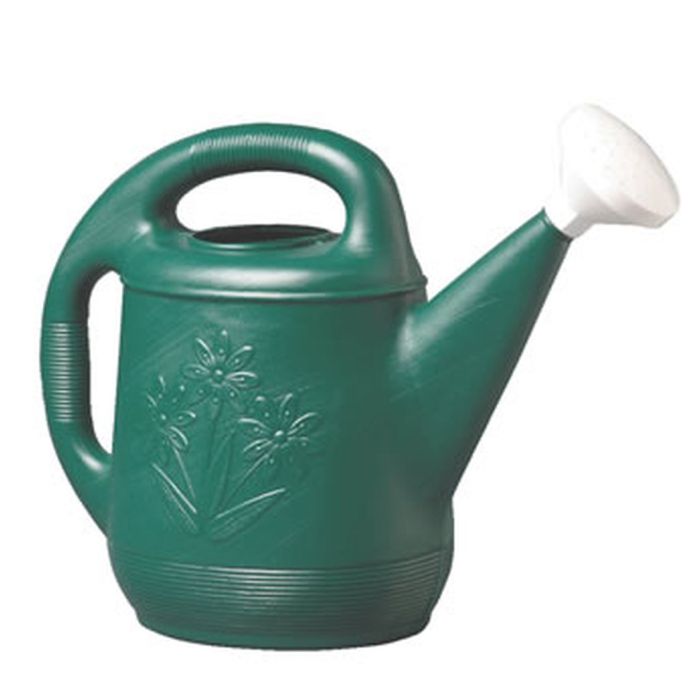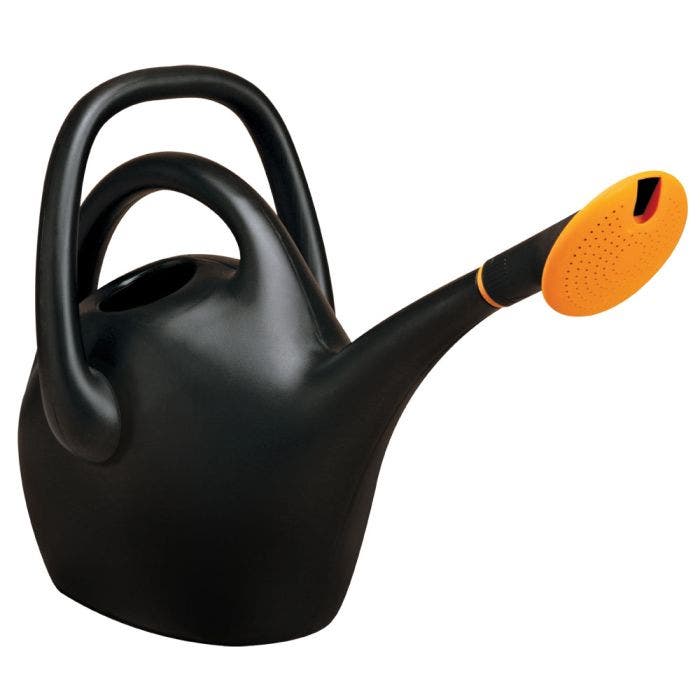Choosing the Right 3 Gallon Watering Can
When shopping for a 3 gallon watering can, consider its design and material. Look for ergonomic features that make it comfortable to carry and pour. Metal cans are durable but may be heavier, while plastic ones are lightweight but might not last as long. Ensure the can has a well-designed spout for accurate pouring, and check if it comes with a detachable rose for gentle watering. Choose a can with a sturdy handle that won’t strain your hand. Remember that balance is key: a full 3 gallon can gets quite heavy, so it should feel stable when lifted. Steer clear of cans with seams or weak joints that might leak. Lastly, consider the aesthetic appeal if you plan to display it in your garden. Pick a can that suits your style and meets your gardening needs.
Benefits of Using a 3 Gallon Watering Can
Using a 3 gallon watering can offers key benefits for gardeners and plant enthusiasts. The size provides ample water for multiple plants, reducing the need for frequent refills. With a larger capacity, you can water your garden more efficiently, saving you time and effort. This can is ideal for deep watering, encouraging strong root growth by allowing moisture to penetrate deeper into the soil.
The extra volume also helps maintain a consistent watering routine, which is essential for plant health. Consistency in watering promotes steady growth and can prevent stress from under or over-watering. Additionally, with a 3 gallon can, you have the flexibility to add liquid fertilizers or plant food, mixing it directly with the water for an even distribution. This can lead to better nutrient absorption and healthier plants.
A 3 gallon watering can might seem bulky, but the benefits of fewer trips back to the faucet are clear. It’s a practical choice for those with larger gardens or the desire to minimize labor during their gardening tasks. Choose a 3 gallon can to enjoy these advantages and keep your green space flourishing. Remember to look for cans with features that cater to comfort and ease of use.
Optimal Watering Techniques with a 3 Gallon Can
To water effectively with a 3 gallon watering can, start by planning your route. Begin with plants farthest from your water source and work your way back. This prevents unnecessary trips and saves time. Fill your can to a level that’s manageable. For some, a full can may be too heavy, so adjust the water volume to suit your strength.
Water plants at their base rather than from above. Directing the water flow at the root zone reduces evaporation and leaf wetness, which can lead to fungi. Use a slow and steady pour to avoid soil erosion or disturbing the plant roots. If your can has a rose attachment, use it for delicate plants that require gentler watering.
Early morning or late afternoon are the best times to water. These hours allow the water to soak in before the high heat of day increases evaporation. Moreover, watering in cooler temperatures helps prevent shock to the plants.
Finally, establish a regular watering schedule. Consistent watering helps plants grow strong and avoid the stress of drying out or being overwatered. With your 3 gallon watering can, this routine becomes less burdensome as you’ll be making fewer trips to refill.
Caring for Your 3 Gallon Watering Can
To make sure your 3 gallon watering can lasts, proper care is essential. Keep it clean by regularly rinsing it out with water, especially if you use it for mixing fertilizers or plant food solutions. This prevents any residue build-up that could clog the spout or rose attachment.
Store your watering can in a dry place to prevent rusting or damage, especially important for metal cans. For plastic watering cans, keep them out of direct sunlight when not in use to avoid UV damage.
Check for leaks or wear regularly. If you find a small hole in a metal can, you may be able to patch it as a temporary fix. For plastic cans, a strong adhesive might work, but consider replacing the can if the damage is significant.
Treat any moving parts, like hinges on the handle or the rose attachment, with care. Lubricate them as needed to keep them functioning smoothly. Be sure to empty the watering can completely before storing it to avoid unnecessary stress on the can from the weight of the water.
By maintaining your 3 gallon watering can properly, you’ll ensure its longevity and performance in keeping your garden green and healthy.
Accessories to Enhance Your Watering Can Experience
To maximize your gardening with a 3 gallon watering can, consider adding useful accessories. These can make your watering more efficient and enjoyable. Start with a watering can rose attachment. This tool spreads water evenly, perfect for delicate plants and seedlings. It also minimizes soil disruption. Next, pick up a watering can holder. This device saves space and keeps your can accessible and organized. A long-reach nozzle is another smart addition. It extends your reach and allows you to water hard-to-access areas. If you prefer precise watering, a spout with a flow control valve is handy. It helps manage water volume and reduces waste. For anyone mixing nutrients or plant food in their can, measuring tools are essential. Use a measuring cup or scoop for accurate portions. Some gardeners add a carrying strap to their can. It eases the load on your arms and back, especially when the can is full. Lastly, decorative covers are available. They protect your can from the elements and add a touch of style to your garden tools. These accessories can enhance your gardening and help your 3 gallon watering can serve you better.
Common Mistakes to Avoid When Using a 3 Gallon Can
Using a 3 gallon watering can is straightforward, but there are still errors to dodge. Avoid the most common missteps to maintain a healthy garden and a functional tool.
First, don’t overfill the can. It may be tempting to use its full capacity. Remember, water is heavy. Carrying too much can strain your back and make pouring less controlled. It’s better to fill the can to a weight you can manage comfortably.
Second, avoid watering in the heat of the day. This often leads to evaporation before the water reaches the plant roots. Aim for early morning or late afternoon for the best results.
Third, don’t ignore the pour technique. Watering plants from above can encourage disease. Instead, direct water close to the soil, near the plant base. This method targets the roots and preserves plant health.
Additionally, don’t neglect regular maintenance of your can. Clean it after use, especially if you mix in fertilizers. This prevents clogs and preserves the condition of the can.
Lastly, resist the urge to use a powerful jet. This can disturb the soil and harm plant roots. A gentle watering approach is more effective. If it has an attachment, use the rose to distribute water evenly.
By avoiding these common mistakes, you ensure your 3 gallon watering can is an asset to your gardening routine.
Creative Uses for a 3 Gallon Watering Can Beyond Plants
A 3 gallon watering can is not just for plants. It can serve multiple uses around your home and garden. Here are some creative ways to utilize your watering can beyond watering plants:
- Water Transport: Carry water to areas without a hose or faucet. This is handy for filling birdbaths or topping up a pet’s water bowl.
- Mixing Solutions: Use the can to mix and dispense homemade cleaning solutions for outdoor furniture and decks.
- Garden Tool Cleaner: After gardening, fill the can with water and use it to rinse soil off tools.
- Kid’s Play: Children can use it for outdoor water play, teaching them about pouring and measuring.
- Cool Down: Sprinkle water to cool down hot surfaces like patios or decks in the summer.
- Compost Tea Distributor: If you make compost tea for your garden, the can is perfect for applying it to your soil.
- Water Weight: Fill the can and use it as a weight for fitness exercises or to hold down objects on windy days.
- Decorative Piece: When not in use, it can be an aesthetic element in the garden or patio.
These inventive applications show the 3 gallon watering can’s versatility. From practical uses to creative solutions, this garden staple can do much more than keep your plants hydrated.



